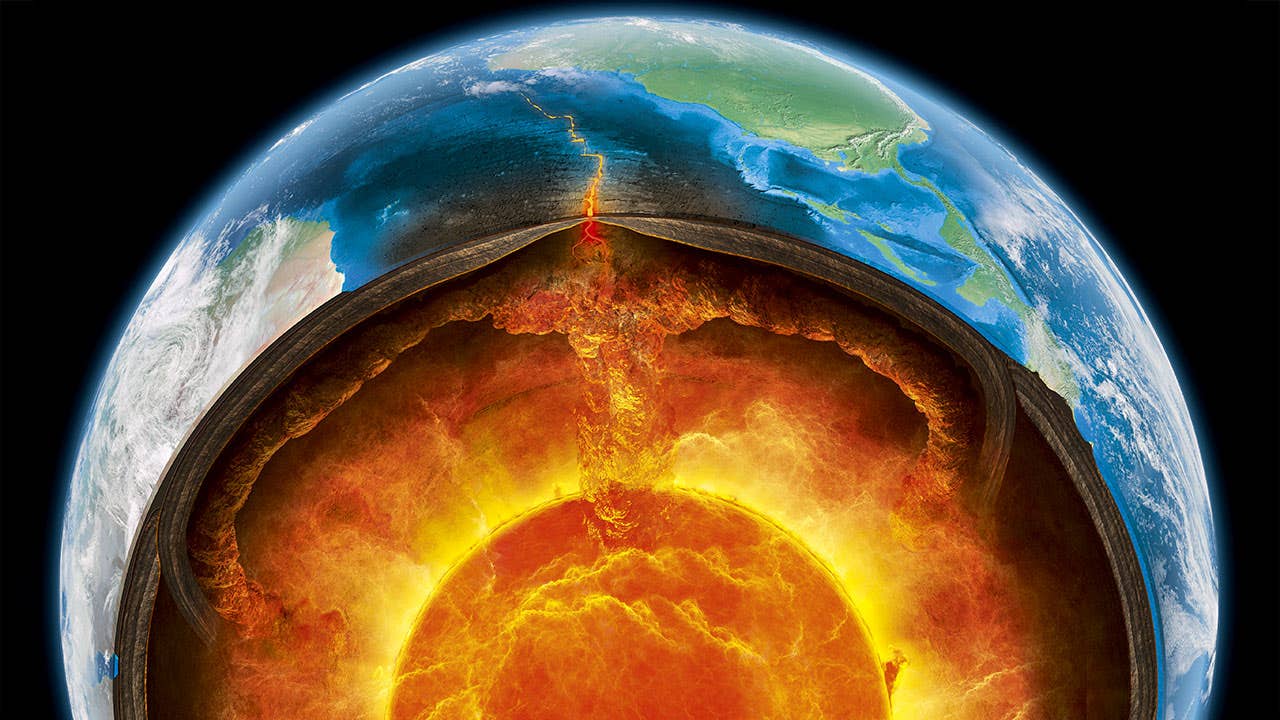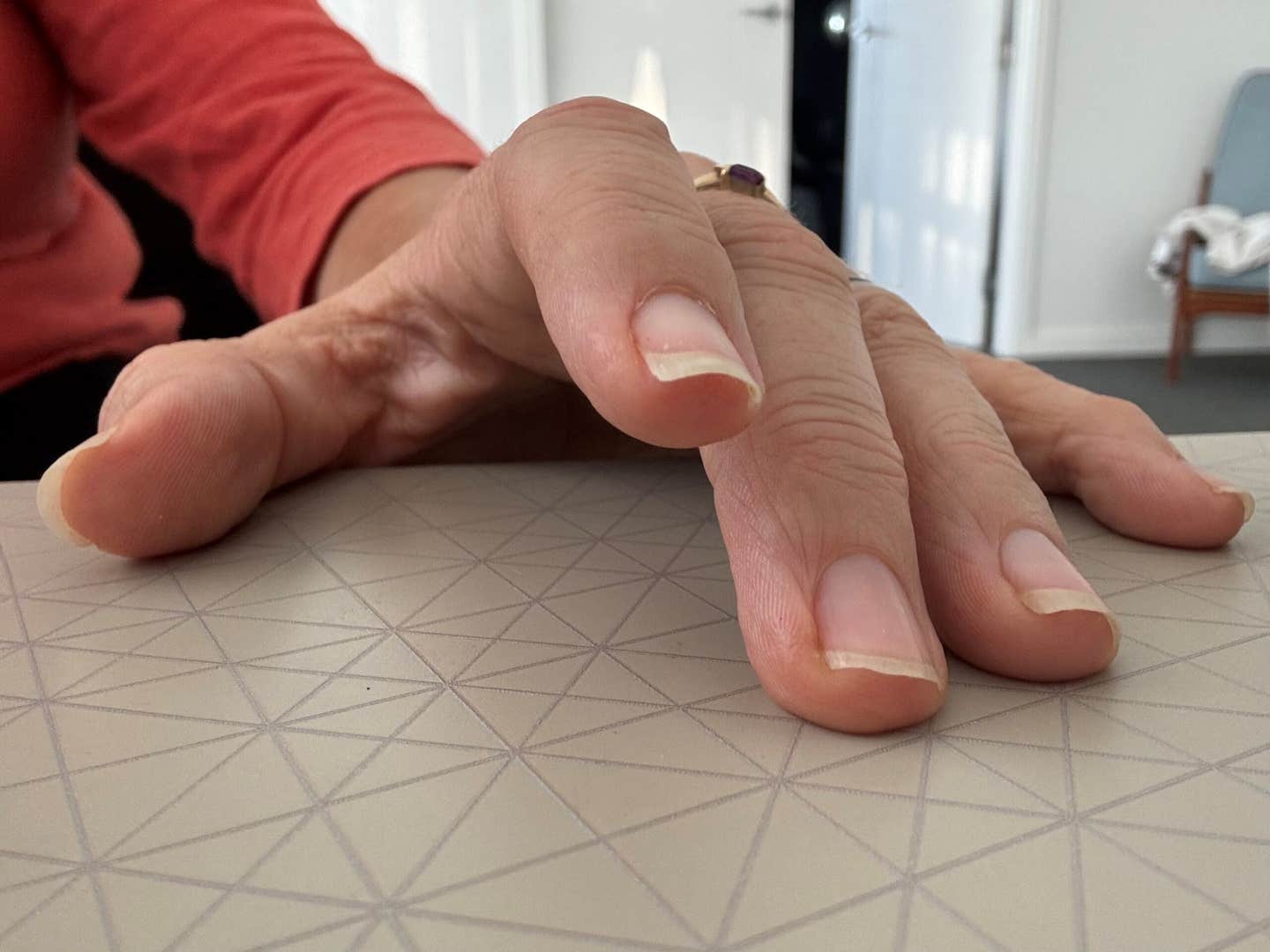Surface water extends much deeper into the Earth than scientists previously thought
For decades, a puzzling layer, known as the E’ layer, has resided just above Earth’s outer core.

For decades, a puzzling layer, known as the E' layer, has resided just above Earth's outer core. This thin zone, roughly 200 kilometers thick, has eluded explanation by scientists.
However, a recent study published in Nature Geoscience sheds light on its origin, revealing a surprising connection between Earth's surface water and its metallic core.
The international research team, which included Arizona State University's Dan Shim, Taehyun Kim, and Joseph O'Rourke, proposes that water from Earth's surface journeys deep into the planet's interior through a process called subduction.
Tectonic plates, the large, mobile slabs of Earth's crust and upper mantle, carry this water down to the core-mantle boundary, a scorching zone approximately 1,800 miles below the surface. Here, the water triggers a significant chemical reaction, fundamentally altering the composition of the outermost region of the core.
Using high-pressure experiments, the researchers, along with Yong Jae Lee from Yonsei University in South Korea, mimicked the conditions at the core-mantle boundary. Their findings demonstrated that subducted water chemically interacts with core materials, specifically silicon. This reaction creates a distinct layer characterized by an enrichment of hydrogen and a depletion of silicon.
This modified layer, essentially a film at the top of the outer core, is predicted to be less dense and exhibit slower seismic wave velocities, aligning perfectly with the unusual seismic properties observed by scientists.
"Previously, the exchange of material between the core and mantle was thought to be minimal," explains Shim. "However, our experiments paint a different picture. When water reaches the core-mantle boundary, it reacts with silicon, forming silica. This discovery, along with our prior observation of water reacting with iron under high pressure to form diamonds, suggests a much more dynamic core-mantle interaction with substantial material exchange."
This groundbreaking research has significant implications for our understanding of Earth's internal processes. It suggests a far more extensive global water cycle than previously recognized.
The water doesn't simply reside passively within the Earth; it actively participates in geochemical cycles, potentially linking the surface-water cycle with the churning metallic core deep within the planet.
Related Stories
The research team utilized cutting-edge experimental techniques at the Advanced Photon Source of Argonne National Laboratory and PETRA III of Deutsches Elektronen-Synchrotron in Germany.
These facilities allowed them to recreate the extreme conditions of the core-mantle boundary, enabling them to probe the water-core material interactions.
Kim, who initiated the project as a visiting PhD student at ASU and is now a postdoctoral researcher, played a crucial role in the study. Shim, a professor at ASU, spearheaded the high-pressure experimental work.
O'Rourke, an assistant professor, contributed by performing computational simulations to understand the formation and stability of the altered core layer. Lee led the Yonsei University research team, which included key researchers Vitali Prakapenka, Stella Chariton, Rachel Husband, Nico Giordano, and Hanns-Peter Liermann.
This research paves the way for a deeper understanding of Earth's internal dynamics. It challenges previous assumptions about the core-mantle boundary as a static zone and reveals a surprisingly active interplay between Earth's surface and its deep interior.
The implications for our understanding of the global water cycle and geochemical processes within the planet are significant, prompting further research to explore the full extent of this newly discovered connection.
For more green news stories check out our Green Impact section at The Brighter Side of News.
Note: Materials provided above by The Brighter Side of News. Content may be edited for style and length.
Like these kind of feel good stories? Get the Brighter Side of News' newsletter.
Joseph Shavit
Head Science News Writer | Communicating Innovation & Discovery
Based in Los Angeles, Joseph Shavit is an accomplished science journalist, head science news writer and co-founder at The Brighter Side of News, where he translates cutting-edge discoveries into compelling stories for a broad audience. With a strong background spanning science, business, product management, media leadership, and entrepreneurship, Joseph brings a unique perspective to science communication. His expertise allows him to uncover the intersection of technological advancements and market potential, shedding light on how groundbreaking research evolves into transformative products and industries.



